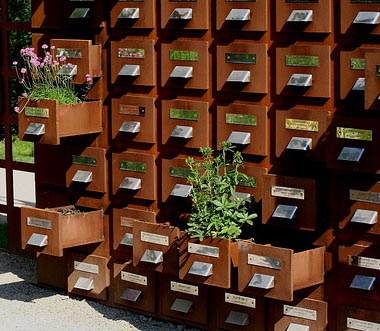Rhetorical Responsiveness: Responding to Literacy Narratives as Teachers of Composition - by Cynthia L. Selfe and the DALN Consortium

David Boome’s “Foreword“ to this project introduces five approaches to reading the curated exhibits in Stories That Speak to Us (and the DALN literacy narratives on which they focus), the second of which involves reading “with and against” materials in “similar archives.” This particular exhibit on “Rhetorical Responsiveness” takes a slightly different, but related approach. One important part of our argument in this exhibit is not to compare the literacy narratives in the DALN with materials in other similar archives of literacy materials. Rather, our hope is to read (and understand) the entire DALN, as an unruly folksonomic “2.0” effort, in comparison to/in contrast with more conventionally structured and tidy archives controlled by professionals versed in the science of diplomatics.
To appreciate the importance of this larger argument, however, does involve paying attention to individual literacy narratives in the DALN in all their specificity and “particularlity” (see Bloome “Foreword“). Especially from our perspectives as composition teachers, we need to approach the personal accounts of individuals with a level of rhetorical responsiveness that recognizes our own professional responsibilities to students in the classes we teach.
In this exhibit, then, we set out to accomplish three tasks:
- First, we ask readers to watch/listen to three different literacy narratives from the DALN that provide a small, but nevertheless interesting, subset of the kinds of materials that women students have contributed to the collection.
- We then explore these first-hand accounts within the context of the archive 2.0 movement (Huvila, 2008, p. 24).
- Finally, we ask readers to consider how thinking about the DALN as an example of the archive 2.0 movement could help composition teachers shape the ways they read and think about students' literacy narratives and how they might respond in terms of professional practices.
Before readers begin with the tasks above, some of them may be interested in a few of the decisions that went into this curated exhibit, which was designed originally as a Powerpoint presentation for the 2010 Watson Conference in Louisville, Kentucky. In that context, the material that follows was designed for a face-to-face presentation, rather than for an exhibit meant to be read/watched/listened to in non-face-to-face settings. We believe that similar moves of re-mixing/re-purposing has become an increasingly common in the digital contexts that serve compositionists and the students they teach. As Johnson-Eiola and Selber note, such compositions “offer important new ways for thinking critically and productively: not only about concepts [such] as “intertextuality,” “remix,” and “assemblage,” but also about “what it means to write, about what it means to read, and about what we value as texts in rhetoric in composition” (p. 376). Along with these colleagues, we believe that remixes offer “approaches that can aid invention, leverage intellectual and physical resources, and dramatize the social dimensions of composing” (p. 375) in the 21st century.
